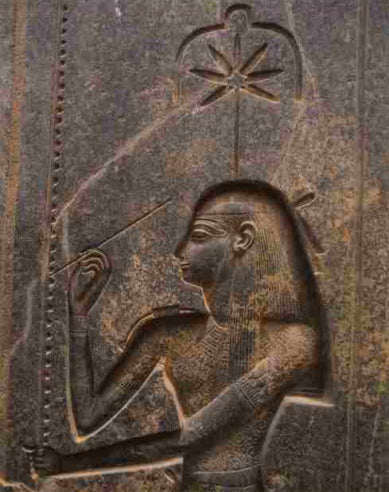Photo credit: Werner Forman/Art Resources, NY
Medical marijuana is in the spotlight with CBD (Cannabidiol) products becoming one of the fastest growing markets.
Medicinal cannabis is gaining more and more attention and there is fear that big pharmaceutical companies like Bayer in the U.S will create a monopoly as they desperately try to find a way to patent this natural medicinal plant, driving out small CBD oil supplement companies.
So why are people turning to medicinal cannabis in their droves and finally finding relief from life-long debilitating ailments?
Cannabis and the human body
The human body actually has cannabinoid receptors.
The endocannabinoid system (ECS) is one of the largest neurotransmitter networks. This system helps maintain homeostatis, in other words it helps ensure optimal balance in the body, regulating immune function, the sleep/wake cycle, pain, cognition, mood, memory and visceral sensation.
The active compounds in cannabis directly engage with the endocannabinoid system and so the cannabis plant is an important supplement for the ECS.
THC (Tetrahydrocannabinol ) and CBD (Cannabidiol) are the two best-known cannabinoids that recently received a lot of attention for medical application but there are thought to be more than 80 cannabinoids present in marijuana and hemp plants.
CBD oil is legal in the UK and has to contain less than 0.02% of THC, the main psychoactive ingredient in marijuana.
Our relationship with cannabis it is now being re-kindled.
Cannabis throughout the ages
The history of cannabidiol goes back thousands of years. Archaeological findings suggest that cannabis sativa was likely one of the first crops planted by early man at the end of the ice age.
Cannabis plants are extremely versatile and have been used as food, medicine and textiles, the earliest woven fabric thought to be made of hemp fibres.
All over the world countries were discovering the medicinal properties of cannabis.
In 1213 B.C the Egyptians were using cannabis to treat glaucoma and inflammation and in the Middle East an ancient Persian text lists cannabis as the most important of 10,000 medicinal herbs.
Hemp (the non-psychoactive variety of cannabis) has been a significant crop throughout the history of the world. It was typically grown for fibre and at one time 90% of all ship’s sails were made from hemp and until the 20th century 80% of the world’s textiles including sheets, clothing and towels were made from hemp fibres.

Photo credit: Tim Boote, Unsplash
Until 1883 nearly 90% of paper was made with hemp and nearly every city in the world had an industry making hemp rope.
What a versatile history.
Cannabis as medicine
In the US the medicinal properties of cannabis were realised and the U.S Pharmacopeia of 1881 stated that cannabis could treat epilepsy, depression, neuralgia, rheumatism, asthma and alcoholism.
Unfortunately Reefer Madness propaganda and misguided information lead to the demise of cannabis and in 1930 its prohibition began.

Photo credit: Esteban Lopez, Unsplash
In England Queen Victoria was administered cannabis by her doctor to alleviate period pain but towards the end of the 19th century the invention of the syringe lead to the medicinal use of cannabis coming to an end; cannabis can’t be dissolved in water and so couldn’t be injected.
The introduction of aspirin and other drugs also contributed to the reduction in the use of cannabis and in 1928 it was eventually made illegal when an Egyptian delegate at an international drug conference in Geneva convinced everybody of its threat to society.
It has now made a huge comeback after being demonised for so long.
CBD or Medical Marijuana deserves a respected place and should be considered in the treatment of health conditions such as –

Share:
Dad You Were Right About Coconut Oil
The Healing Capacity of the Vagus Nerve